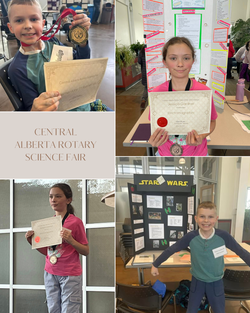Holy Trinity Science Fair

We had 2 students attend the Central Alberta Rotary Science Fair hosted at Red Deer Polytechnic this past weekend!
Jessica Gardner with her “Electromagnetism” project wowed the judges and won a bronze medal in the grade 5/6 division.
Aidric Dulmage’s enthusiastic presentation of his “Starch Wars” project won him a gold medal and earned him first runner up for Best in Fair in the 5/6 division.
This is the highest level that these two can attend for their grades, and we couldn’t be more proud of them both!
